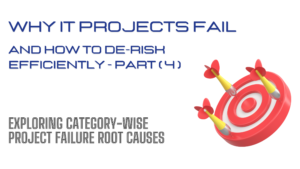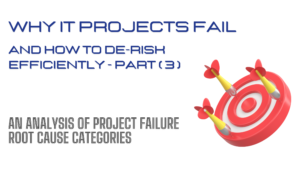Why do IT Projects fail - and How to de-risk them efficiently - Part 2
Introducing the concept of The Cost of Risk Management
Project risks & the cost of risk management
Linking back:
In the previous article in this series, we talked about the “Project Complexity matrix“, and its importance.
The concept of Cost of Risk management
Risk management is the process of identifying project aspects that could potential fail, impacting its ability to complete successfully within commitments.
In Risk management, we identify Risks, assess their probability, urgency, & impact, and then define Risk mitigation actions to contain the impact of risks.
Each Risk mitigation action will require investment of resources & their efforts to complete its execution – And these actions shall need to be executed in addition to the regular Project execution actions.
The additional efforts & cost entailed in executing the Risk mitigation actions can be called the “Cost of Risk management”.
Why is this important?
In today’s context of a global economic slowdown, Businesses have to be cautious about spending.IT Projects are approved after intense scrutiny, and there is a significant expectation that for each IT Project, the Project scope is delivered completely, and on time, so that expenses are limited to approved budget, and that Project value is realized as early as possible.
Especially in cases where Process maturity is lesser than optimal (in either the Business organization or the Delivery organization), or where Project Management skills & efficiency are lesser than needed, there is a good likelihood that:
– Project management and thus the projects do not deliver as per commitments, or
– The Risk management actions executed to minimize the Project failure potential are not effectively performed, reducing their effectiveness.
On the other hand, if Risk management actions are being pursued without adequate analysis of Risk probability & urgency, then it is likely that more Risk mitigation actions could get executed, resulting in low value but adding significantly to costs. This may also affect the overall timelines when the same resources are allocated for the main Project execution actions as well as the Risk mitigation actions.
So it is imperative that Project/ Program managers and Business Sponsors are clear about what Risk mitigation tactics are most relevant for the Project or Program in question, and only execute based on this insight.








